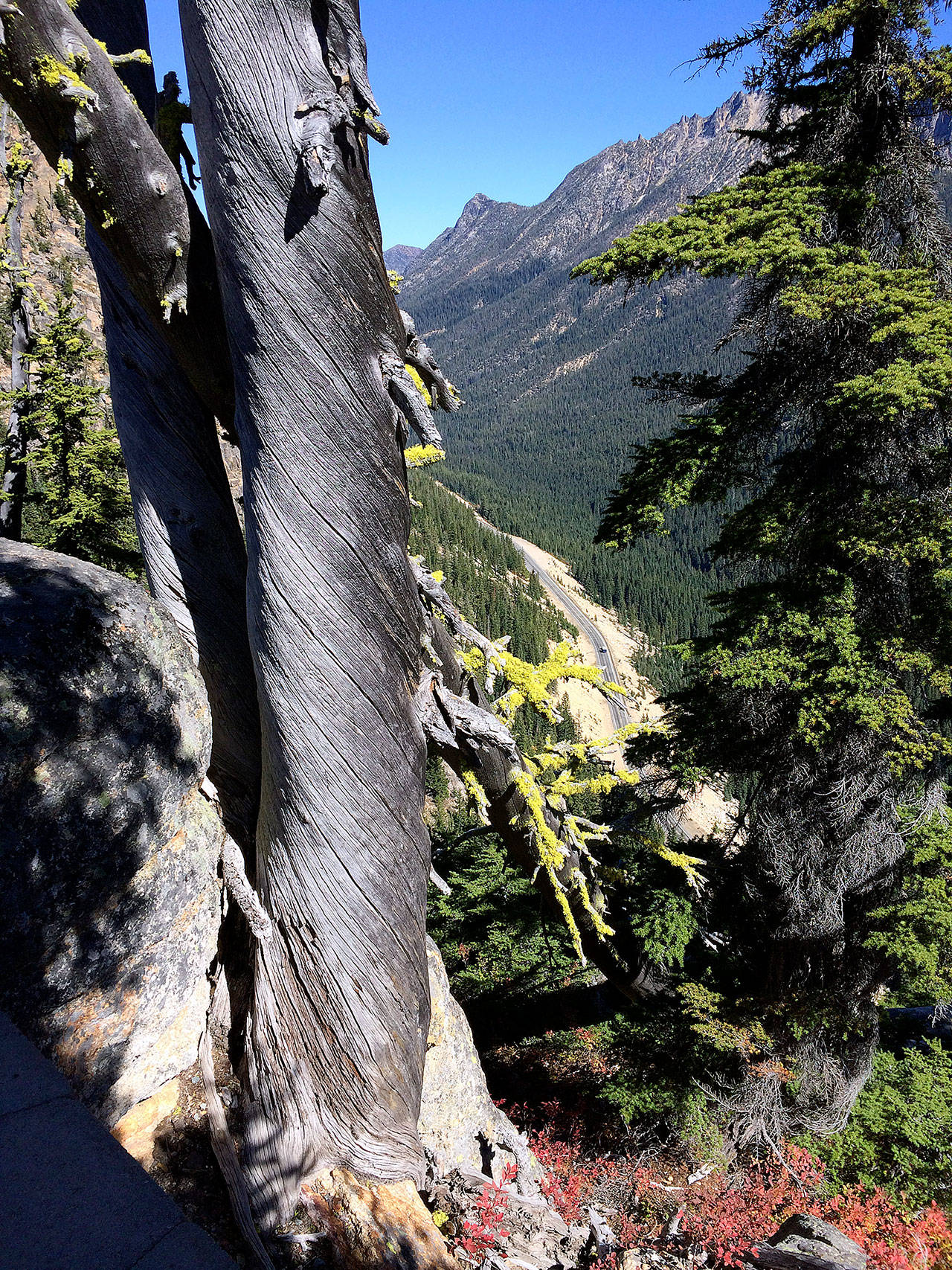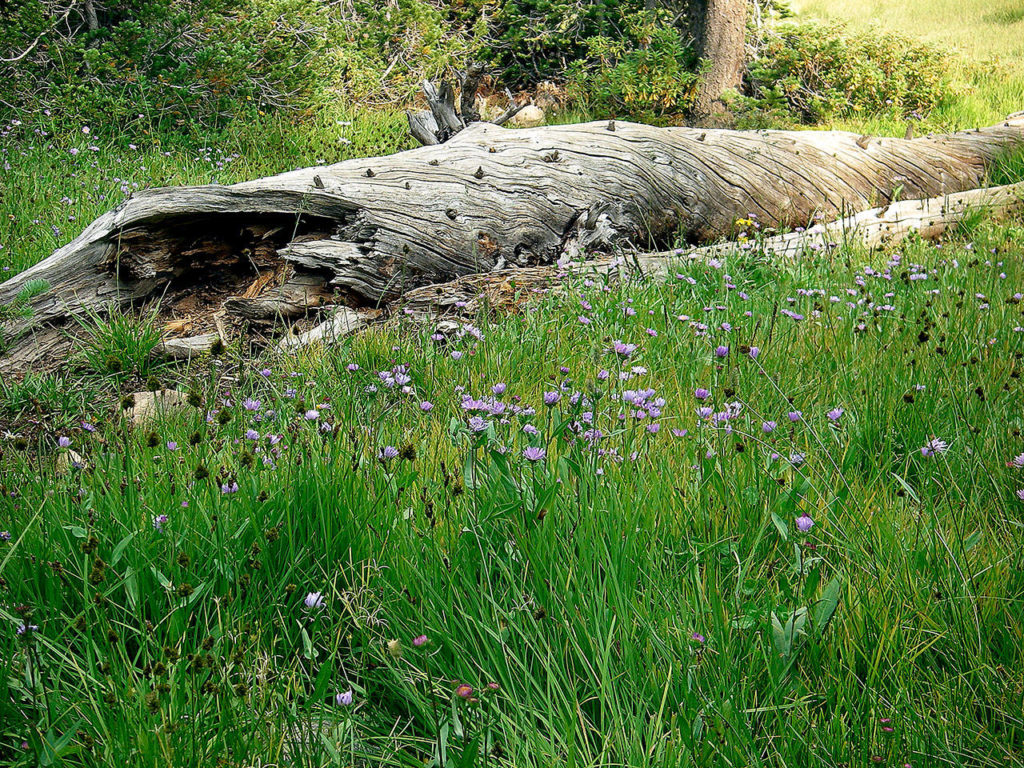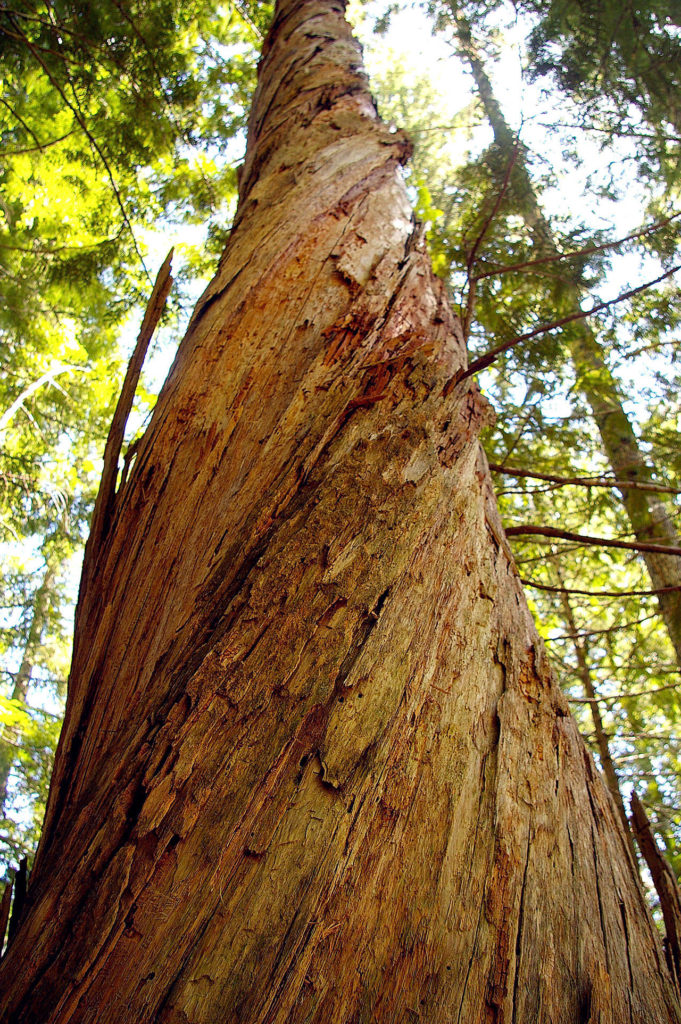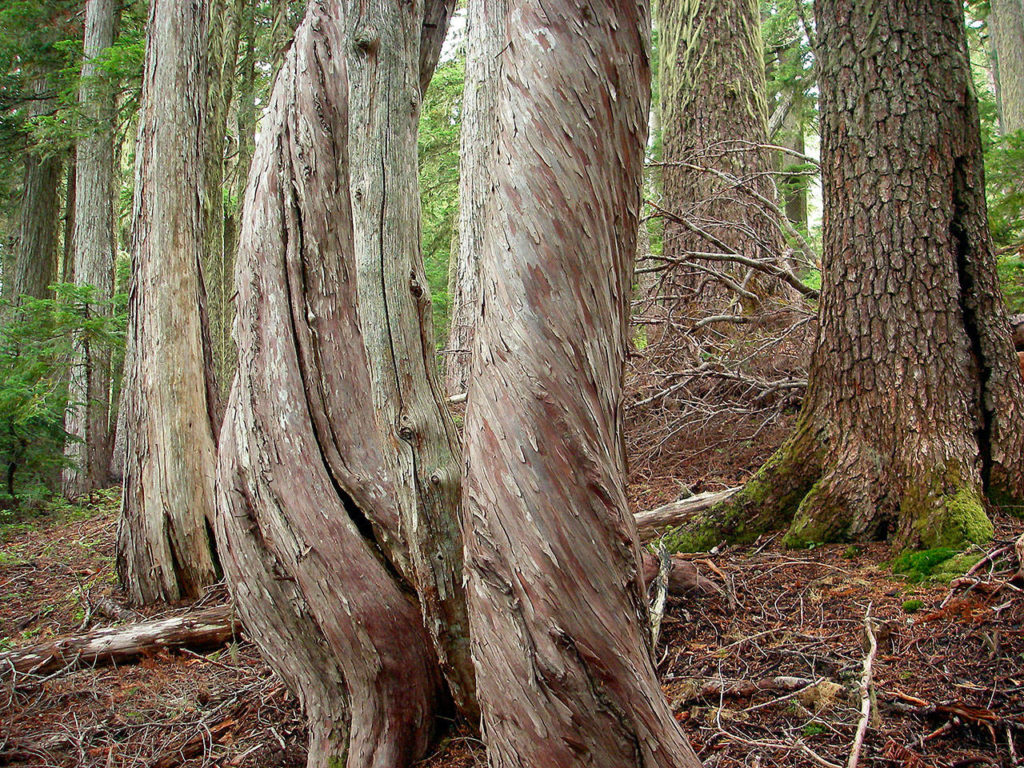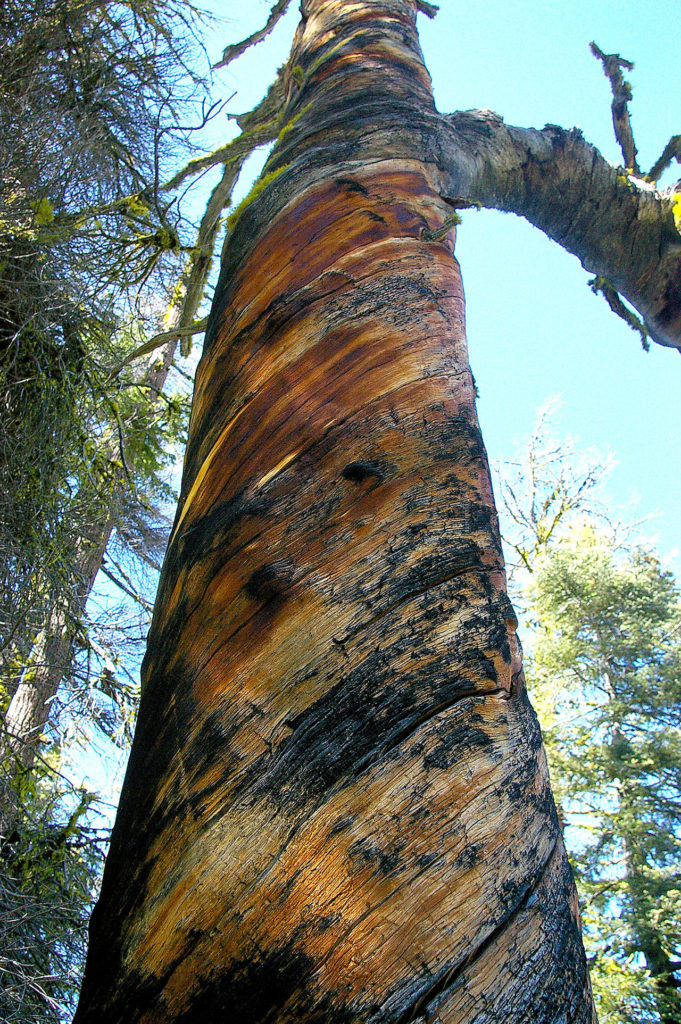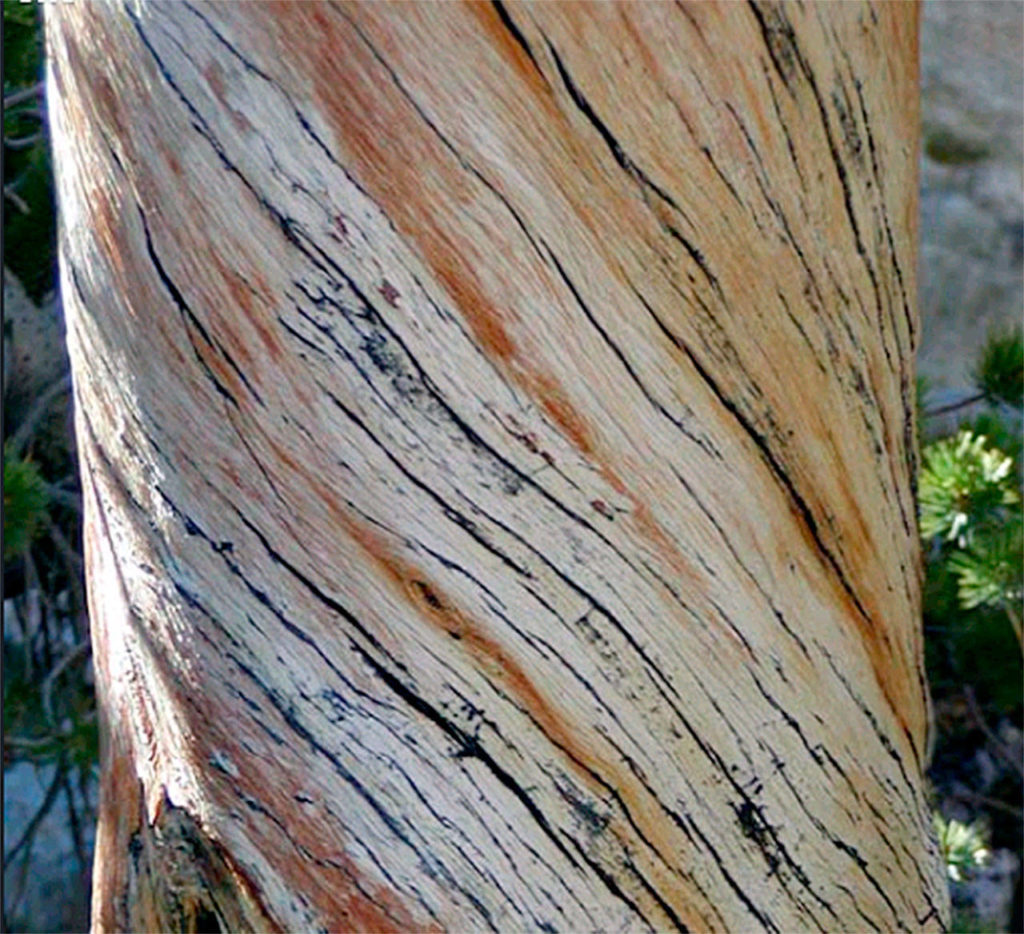By Kim Brown / Washington Trails Association
Washington is full of beauty — summits, mountain lakes, shrub-steppe, coulees, the Salish Sea, the Pacific Ocean and forests — that beckons us outdoors. Along with this pronounced beauty comes a plethora of natural oddities.
I found one such oddity when I tripped over it. Once I was on the ground, I noticed that the log that had tripped me up had a beautiful corkscrew pattern. I wanted to know why.
Because the cover photo on the Washington Department of Natural Resources guide titled “Identifying Old Trees and Forests in Eastern Washington” shows the spiral pattern on a tree, I began my research there.
I then contacted Kevin James, ecologist and botany program manager with the Mount Baker-Snoqualmie National Forest. James was happy to share a peer-reviewed article, “Function of Spiral Grain in Trees” by Hans Kubler, about spiral grain in trees. Though dated, this article is cited in many newer publications and websites.
Here’s what I learned:
This spiral pattern is a clever adaptation for survival. Because the bark and wood of trees do not grow together, the spiral pattern is not usually evident until bark drops off the tree.
The wood cells in trees growing in a windy area or on an unusually uneven substrate — such as shore pines that grow in both windy and sandy areas — can begin to grow in a spiral pattern to give the tree and branches more strength. A spiral pattern can also develop to strengthen tree trunks tasked with supporting an unusually heavy or uneven canopy.
Spiral grain is more able to twist, rock and roll with the wind than straight-grained branches so that a branch is less likely to break. It also allows branches to more easily bend and move when burdened with heavy snow, to better slough the load.
A spiral grain also efficiently delivers sap and food throughout the tree when a straight grain isn’t sufficient. In a model tree (straight grain, living in ideal conditions), sap and food travel up and down a tree as if on a highway, delivering sustenance to branches and roots located in their straight line of travel.
However, conditions rarely match the ideal, and so the tree must adapt. Perhaps a root is located in poorly drained soil. Or maybe some of its roots or part of its canopy has broken off. The tree’s wood cells then form a spiral pattern that allows sap and food to be distributed to all roots and branches of the tree.
Because the bark and wood of trees do not grow together, the spiral pattern beneath the bark is not usually evident until bark drops off the tree, so old growth forests where downed logs and standing snags are plentiful are good places to see spiral grain trees.
Trails along the Mountain Loop Highway lead to old growth forests, as does Rockport State Park on Highway 20 and the Baker River Trail in Mount Baker-Snoqualmie National Forest. Find more information on these and other trails at www.wta.org.
Next time you see a spiral-grained snag, think about why it grew that way. Was it challenging conditions, the necessity for more strength, or both? Either way, you will know that spiral grain is not a tortuous freak of nature. Rather, it is a wonderful adaptation.
Washington Trails Association is the nation’s largest state-based hiking advocacy nonprofit. WTA promotes hiking as a way to inspire a people to protect Washington’s natural places through collaboration, education, advocacy and volunteer trail maintenance. Get inspired to go hiking and learn how you can help protect trails at www.wta.org.
Trail mysteries
Kim Brown, of Shoreline, is an aficionado of the weird and the wild. If it’s bizarre, she wants to know about it. All year long, she’ll be demystifying trail mysteries as a volunteer ranger for the Mount Baker Snoqualmie National Forest. Do you have a trail mystery to solve? Contact her at brownk3@uw.edu.
Learn more
The study of wood grain in trees is vast, complicated and riddled with math equations. If you’d like to learn more, the U.S. Forest Service’s Pacific Northwest Research Station, www.fs.fed.us/pnw, and the Washington Department of Natural Resources, www.dnr.wa.gov, have articles on their websites.
Talk to us
> Give us your news tips.
> Send us a letter to the editor.
> More Herald contact information.
